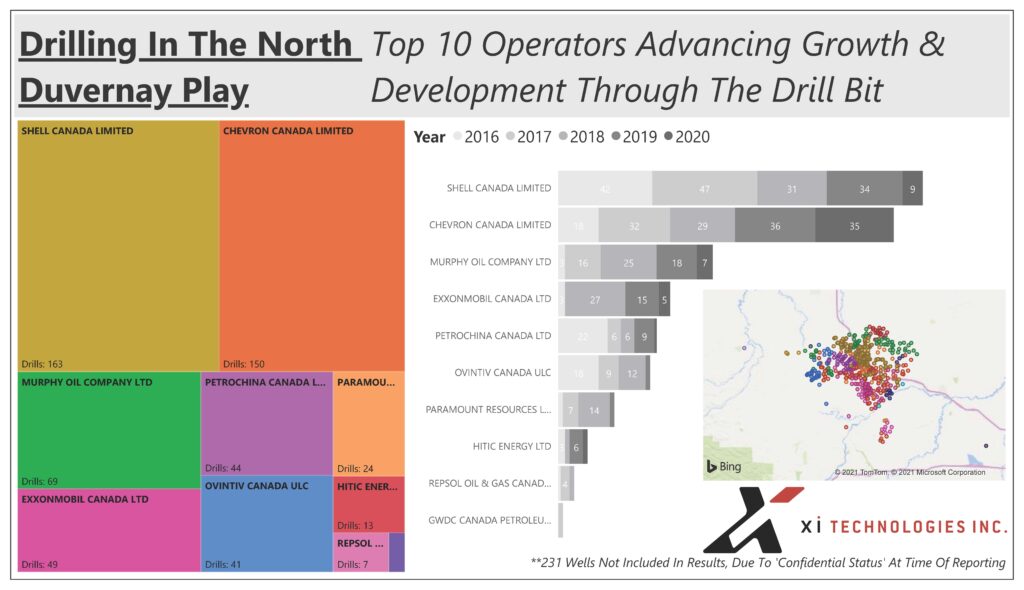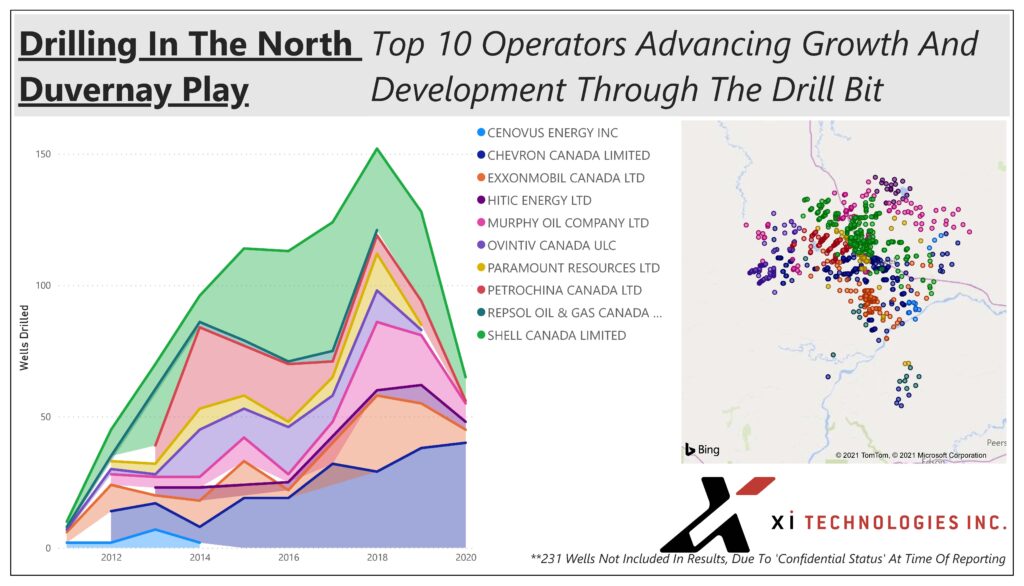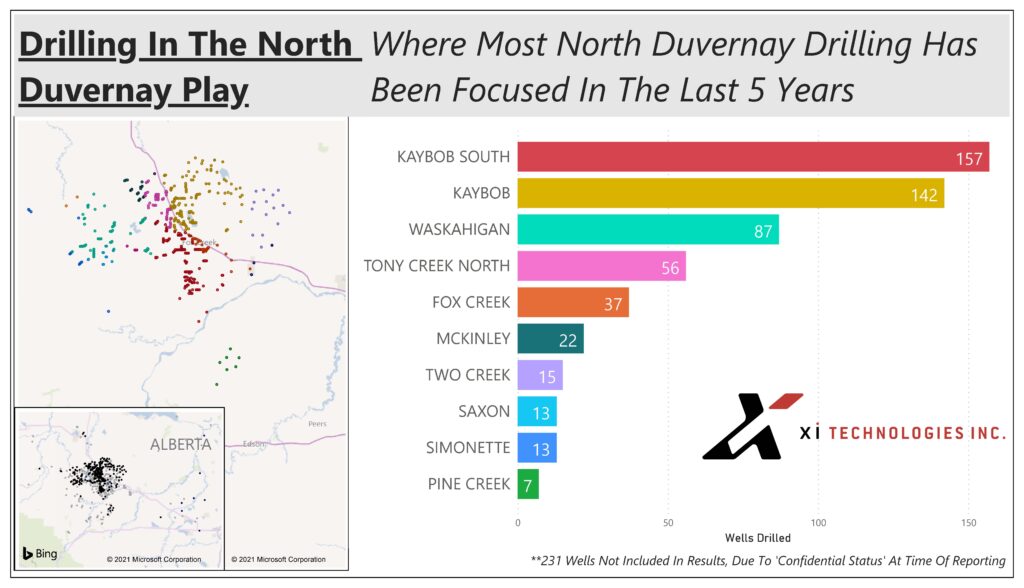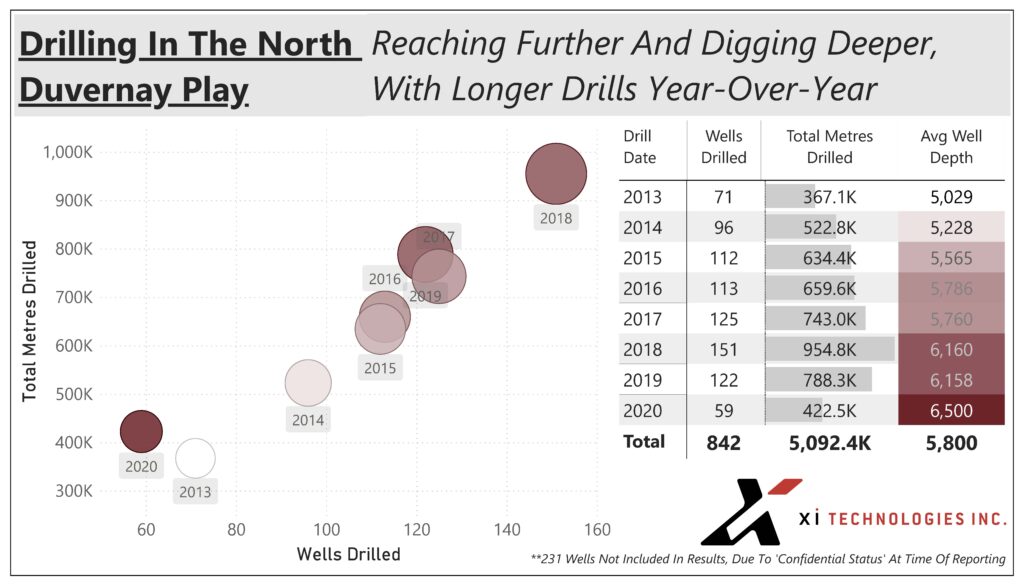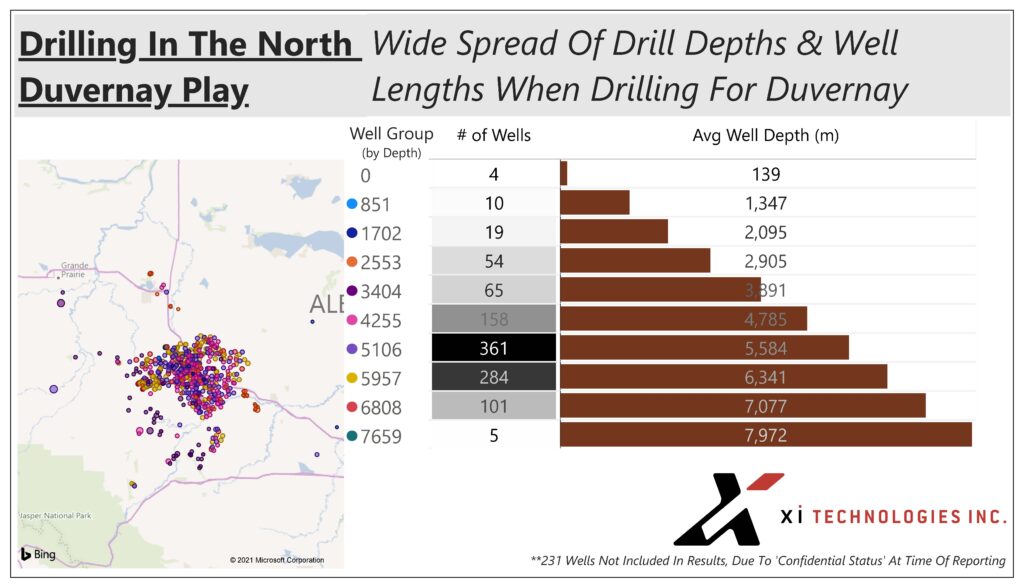Word to the Wise: Duvernay Drilling Overview
April 27, 2021
Each week, XI Technologies scans its unique combination of enhanced industry data to provide trends and insights that have value for professionals doing business in the WCSB. If you’d like to receive our Wednesday Word to the Wise in your inbox, subscribe here.
Last week, we published an overview of the Duvernay play focusing on ownership, production history, and liabilities in the northern part of the region. This week, we’ll leverage XI Technologies’ drilling data to give an overview of drilling trends in the same part of the formation.
For operators and service providers actively (or potentially) drilling, it’s critical to know the players in the area. Since 2016, the top operators have been Shell Canada Limited (Shell) and Chevron Canada Limited (Chevron) – with Shell’s assets recently purchased by Crescent Point Energy. Murphy Oil Company Ltd (Murphy Oil), ExxonMobil Canada Ltd (ExxonMobil), and PetroChina Canada Ltd (PetroChina) round out the top 5.
Looking at the last 10 years of activity (including two major economic swings), it becomes a bit easier to identify the newer players, as well as those who’ve withdrawn or shifted focus away from the Duvernay over time. To get a better sense of how drilling operations have shifted in recent years, let’s drill down a bit more into the data.
After answering the “who”, next let’s answer the “where”. When talking Duvernay North drilling, what areas are most active?
The infographic below tells us that the bulk of Duvernay drilling is happening in the Kaybob South and Kaybob, followed by Waskahigan, Tony Creek North, and Fox Creek.
Now it’s time for the “what”. Let’s look deeper at information that tells us more about the drills themselves. Canada’s oil and gas sector is internationally admired for its innovation in well construction; much of which is showcased in Duvernay drilling. As illustrated below, companies continue to extend their reach (pun intended) as they drill deeper, more complex wells year-over-year.
The infographic below tells us a few things about how well profiles are evolving over time. Most notable is the average well depth by year, which has increased steadily since 2013. Also noted here are the number of wells and total number of meters drilled, which you’ll see has been steadily rising until 2019 (safe to assume we all know what’s behind that trend shift).
If you would like to learn how data can aide your research in various areas throughout Western Canada, we invite you to attend an upcoming webinar. Register today for our upcoming webinar: Analyzing the Duvernay on April 29.
To learn more about how XI’s OffsetAnalyst software can help you improve drilling research and performance, contact XI Technologies.
